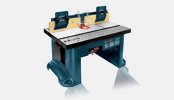|
Woodworking Basics First Steps
My first woodworking basics lesson all those years ago was to learn how to plane straight and true.It starts by turning the plane upside down and casting an eye down the sole of the plane to determine if the protruding blade edge is the same throughout its edge. Should the blade project unevenly you will only plane one edge of the timber, so adjust the angle of the blade to be equal along its width. I have found that my two and a half inch bladed smoothing plane is versatile enough for most jobs. Mark a length of timber say 4mm along its length, both sides and practice planing to the line. try to keep the plane at 90 degrees to the timber. Keep checking both sides and if uneven adjust the angle of the plane accordingly. Remember practice first, you don't want to have to replace later. I learned how to sharpen tools at an early age, without the aid of guides but I recommend you buy a tool such as a Veritas Sharpening system, which you fasten to the plane or chisel blade, ensuring the perfect angle every time. Its best to buy a new water or oil stone as you want to start without any blemishes or uneven wear on the stone. I have always used an oil stone as the oil came in handy to help prevent my hands from drying and cracking. Otherwise always use moisturiser and or barrier cream before you start work Nail That WinnerSounds easy doesn't it, but even a craftsman like myself still bends a few nails or hammers my thumb occasionally. A decent woodworking basics tip is to pilot drill a hole fractionally smaller than the nail width so there is less chance of a blackened thumb nail or blistered skin. Try this method if at first you are wary of getting the nail started. When removing nails, place a small block of wood up to the nail and prize out the nail. This stops any indentation in the workpiece. Don't forget to countersink the nail with a countersink punch. Should you not have one use a large nail. Stand the nail on its head and hammer the point, the flattened point is a good substitute. Just a word of caution: There may be times when you have joined timbers wrongly and have to separate them. Always remove the entire nail or screw to prevent them being stood on at a later point in time Screw TooThe longer the screw the bigger the size of bit or screwdriver head you will require. So make sure one fits the other before attempting any screwing. Most screws nowadays are star headed and much easier to work with than the old slotted screws but they can easily become damaged by using the wrong size tool head. When screwing directly into timber, countersink first, so that the screw head will finish below the surface of the timber. Should you not have a countersink bit, drill a 2 or 3 mm deep hole with the width being just greater than the width of the screw head. Always pilot drill a hole for the screw which will prevent the timber from splitting. Final ThoughtsTimber was once a seed growing into a beautiful tree. our seed is to maintain that beauty by creating from it our designs and projects. Treat the wood with care and once again beauty will return if only in the eyes of the creator. Enjoy your new passion, let me know how you are doing, expand from woodworking basics and if at any time you have problems or queries,please get in touch. Please also browse other woodworking first steps
Return to Woodworking Tips
|





